Game: “Bayonetta 3”
Bayonetta 3
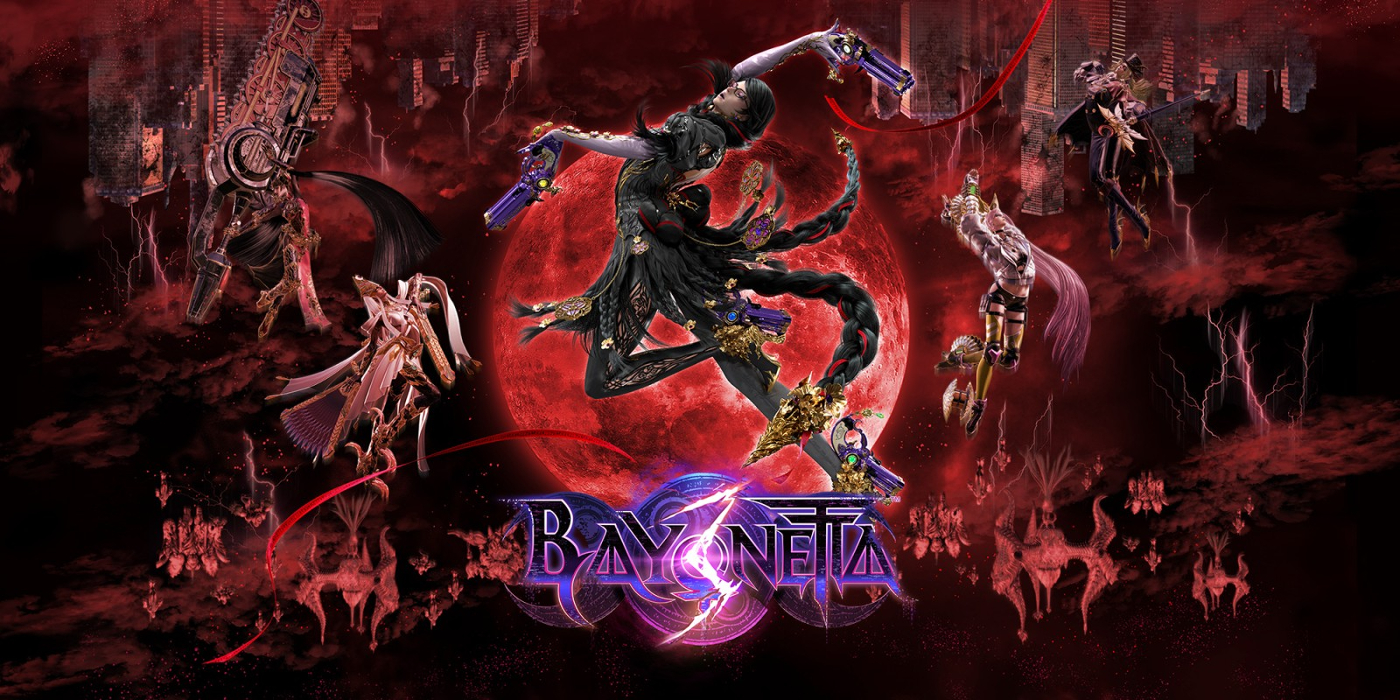

Originally announced in November 2017, Platinum Games have been hard at work creating the follow-up to one of the best hack ‘n’ slash games money can buy. During that time, the team has suffered through cancelled games, fan boycotts and questionable financial decisions that almost destroyed the developer altogether. At a time when the Bayonetta series looked in doubt, Bayonetta 3 finally emerged some nine years after the sublime second part. As a massive fan of the series so far, I felt it was my duty to play through the game multiple times, to ensure that the following review was as accurate as possible. (I promise I didn’t just play the game through and forget to write it up some months later.)
At A Glance
| Bayonetta 3 | |
| Positives | + Slick, flowing combat + Impressive scale of plot + Varied gameplay |
| Negatives | – Pushes the console too far – Poor execution with some game modes – Sluggish Kaiju fights |
| Overall | 7/10 |
| Played On | Nintendo Switch |
| Also Available On | N/A |
| Find out about our scoring policy here. | |
In true Bayo fashion, Bayonetta 3 threw me straight into the story. I joined the titular Umbra Witch in her fight against an entity known as the Singularity, a mass of energy that threatens to destroy the multiverse. In the opening moments, it becomes clear that she cannot win on just her gun-shoes and witty quips alone; after suffering a massive defeat, Bayonetta regroups and tries to focus on collecting certain items that will help her destroy Singularity and restore order to the multiverse. As usual, there’s an ensemble cast ready to help in her fight including the series regulars, Enzo and Jeanne, along with the newbie Viola, a witch-in-training. Bayonetta can also utilise powers from multiversal versions of herself to bolster her firepower.
The core of Bayonetta 3 remains the same as the first two instalments; Bayonetta must hack and/or slash her way through various chapters of the game, but this time against a new enemy known as Homunculi. Rather than spawning from heaven or hell, these are man-made bioweapons that were originally designed to stop supernatural forces from attacking Earth. In true Terminator 2 style, things quickly went south and it was left to me to sort the mess out using Bayo’s trusted array of guns, swords and demons, all of which can be employed at the push of a button.
Combat, for a hack-and-slash game is probably the most important fixture, and nine years since Bayonetta 2, everything remains intact – from Witch Time that slows enemies on a perfect dodge, to the button-mashing climax attacks that finish the enemies off. Platinum has refined the system so that big combos are easier to pull off; as I was knocking the rust off my aged hands and got reacquainted with Bayonetta, I was cutting through enemies in no time like Uma Thurman facing off against the Crazy-88 in Kill Bill. The controller seemed to become one with my soul and I was stringing together long combos like a man possessed.
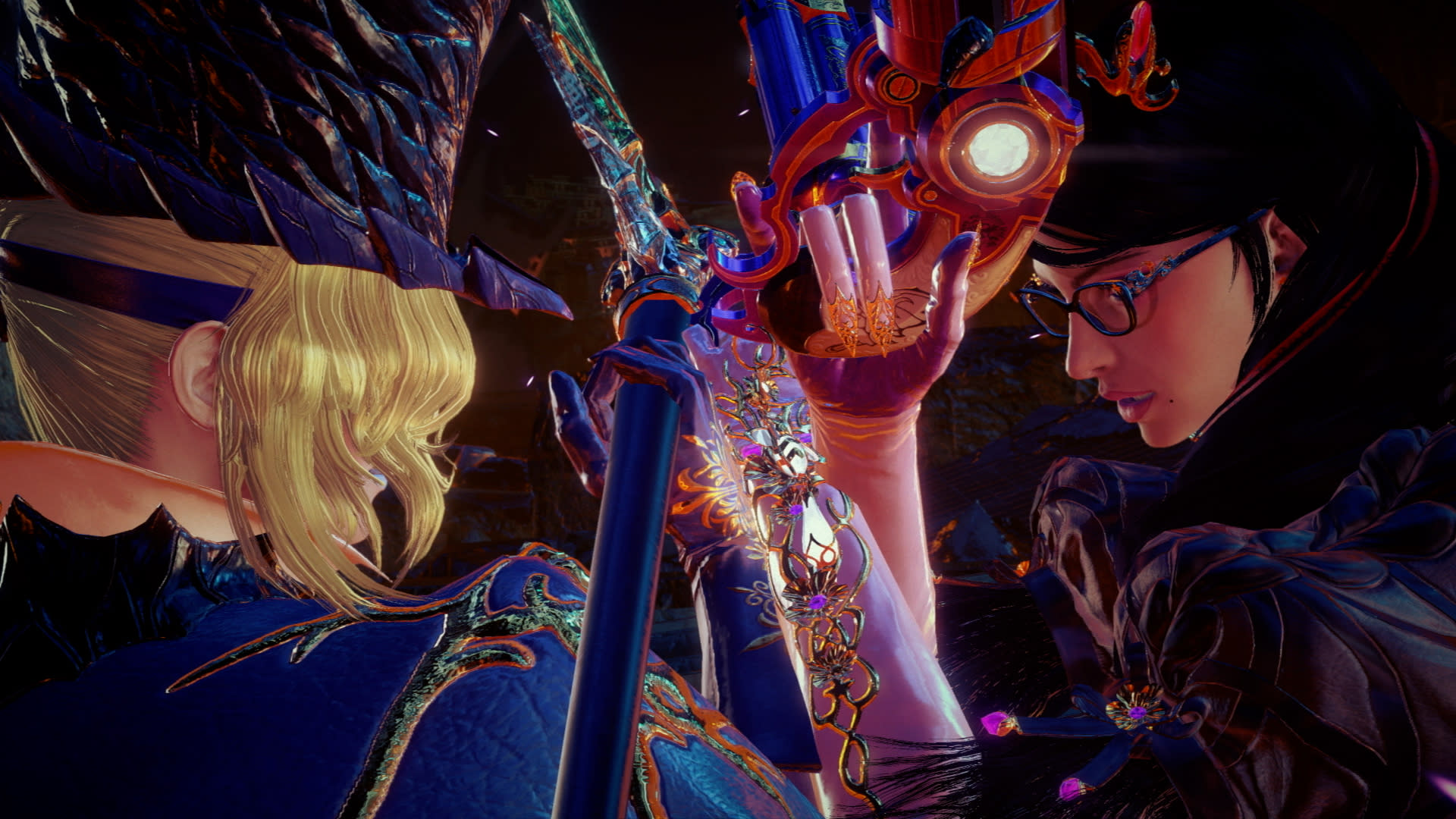
As I progressed through the game, the battle options became even more tantalising to play with thanks to the various upgrades that can be unlocked. The Umbra Witch can transform into a panther, spider, or even a train (sort of). My go-to quickly became the spider form, as not only could Bayonetta swing around each level, but she could use her eight legs to scuttle up walls and speed through the environments in next to no time.
Unlike previous games where Bayonetta was the sole star of the show, I was able to play as both Jeanne and Violet during certain points of the game. The brilliant thing about playing as other characters is that neither witch plays like Bayonetta in the slightest. Violet, for example, relies on parrying with her sword to activate her Witch Time. Certain baddies can only be damaged in Witch Time so it was annoying to have to block an attack with almost a pixel-perfect press of the controller to activate it. While I was adept at dodging with Bayonetta, Violet’s incessant need to reflect projectiles caused the most frustration as missing the timing would either cause massive damage or kill any momentum with the combos. I could see what was trying to be achieved, but it felt a bit unforgiving.
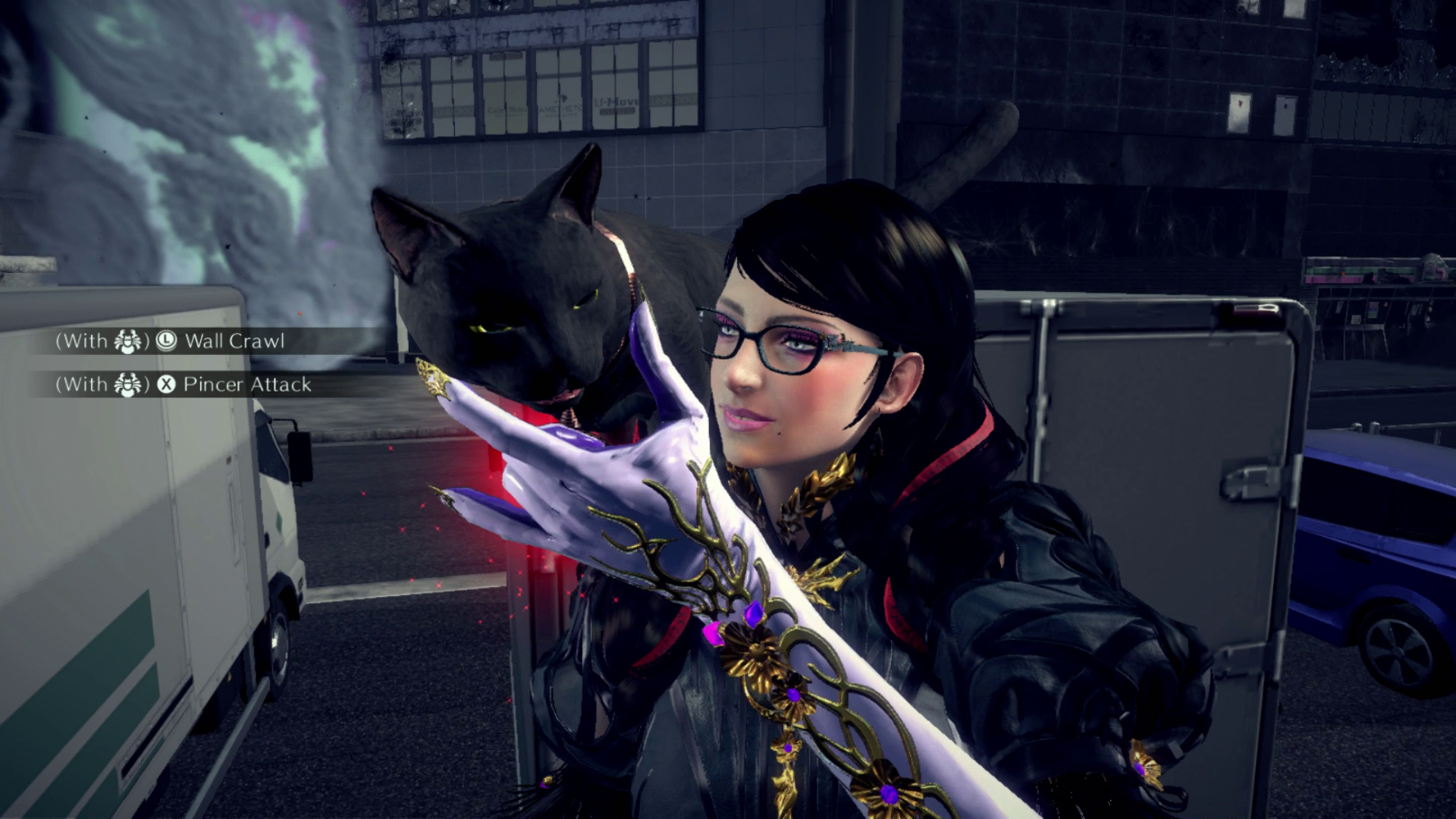
Jeanne’s missions were something else entirely, as it turned Bayonetta 3 into a 2D stealth-‘em-up, where I had to slip into vents and silently take out enemies without being seen. While this made sense in terms of the plot and was rather well done from a gameplay standpoint, I’m not sure the slow and methodical 2D sections worked with the high-octane action game we were playing. Even after finishing the game, I’m still scratching my head about these sections. But even Jeanne’s espionage isn’t the strangest part of Bayonetta 3 – that’s reserved for the Kaiju fights, as we are finally given access to playing as Bayonetta’s pet demon, Gomorrah.
The hulking great demon has been with Bayo since the first game, creeping out of a portal in her hair to munch on weakened enemies before dragging them to the underworld, but now I was able to take full control over the goliath and wreak havoc as a bloodied version of Godzilla. I was excited to get to grips with these levels, but in reality, the fight of my dreams turned into one of the dullest games of Rock, Paper, Scissors in history. To win each Kaiju fight, I had to select the opposing move to counter whatever an enemy was throwing at me. It’s as if Platinum Games heard a fan request and badly built it into the game, just to claim that they had listened. Mercifully, the levels don’t crop up all that often but when they do, I was left wondering if these sections would have been better used for a couple of extra Bayo-centric levels.
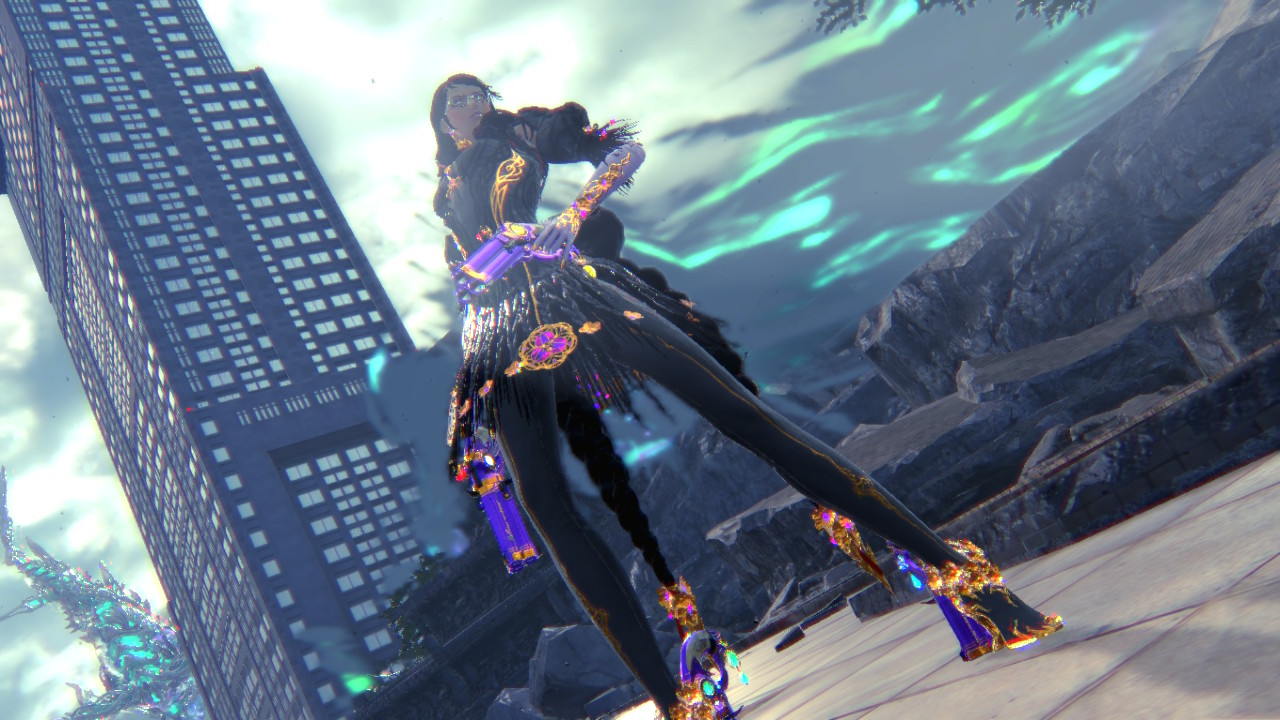
Bayonetta 3 is one hell of a graphically ambitious game for the aging Switch. While games like Doom Eternal and The Witcher 3 have been able to run on the Switch, sacrifices had to be made to make them work in a presentable capacity. But Platinum didn’t get the message about the Switch not being as powerful as the PS4 and seemingly made the game they wanted before the console’s abilities were considered. The result of this is Bayonetta 3’s image quality going from gleamingly polished to a blocky, blurry mess as soon as four or more enemies are on screen.
To their credit, the studio has employed some clever techniques to work around these boundaries to keep the gameplay as smooth as possible. The action remains tight to Bayonetta, in a way that restricts the field of view. This may work well for normal enemies but with the larger ones, the camera remains tight on our Umbra Witch and for large portions of the game, the giants are nothing more than a pair of transparent legs. The varied types of baddies to take on certainly kept me on my toes whenever a combat section started the game never faltered, stuttered, or broke down in any way.
It’s a shame that the Switch struggles to provide a better presentation. When Bayonetta 3 isn’t in a heavy fight scene it is one of the best-looking games on the Switch by quite a way, and having a camera that doesn’t show enemies larger than a human is a real disappointment as the creature designs are some of the best in the series. The angels, demons and homunculi range from winged statues that swoop and dive, all the way to globs of mass that aim to capture and cement Bayonetta to the ground.
Throughout my time with Bayonetta 3, it felt that the game was always on the cusp of setting my Switch on fire, but thankfully my house is still standing and the slick performance was intact. The story is as bonkers as the rest of the series, raising the stakes to a level that’s on par with the latest Marvel movies and while I do think that it is a little try-hard in some areas, we still have another great hack ‘n’ slash from Platinum Games. Bayonetta 3 might have taken a thousand years to arrive, but thankfully it’s bloody good fun and is a fitting addition to the franchise.
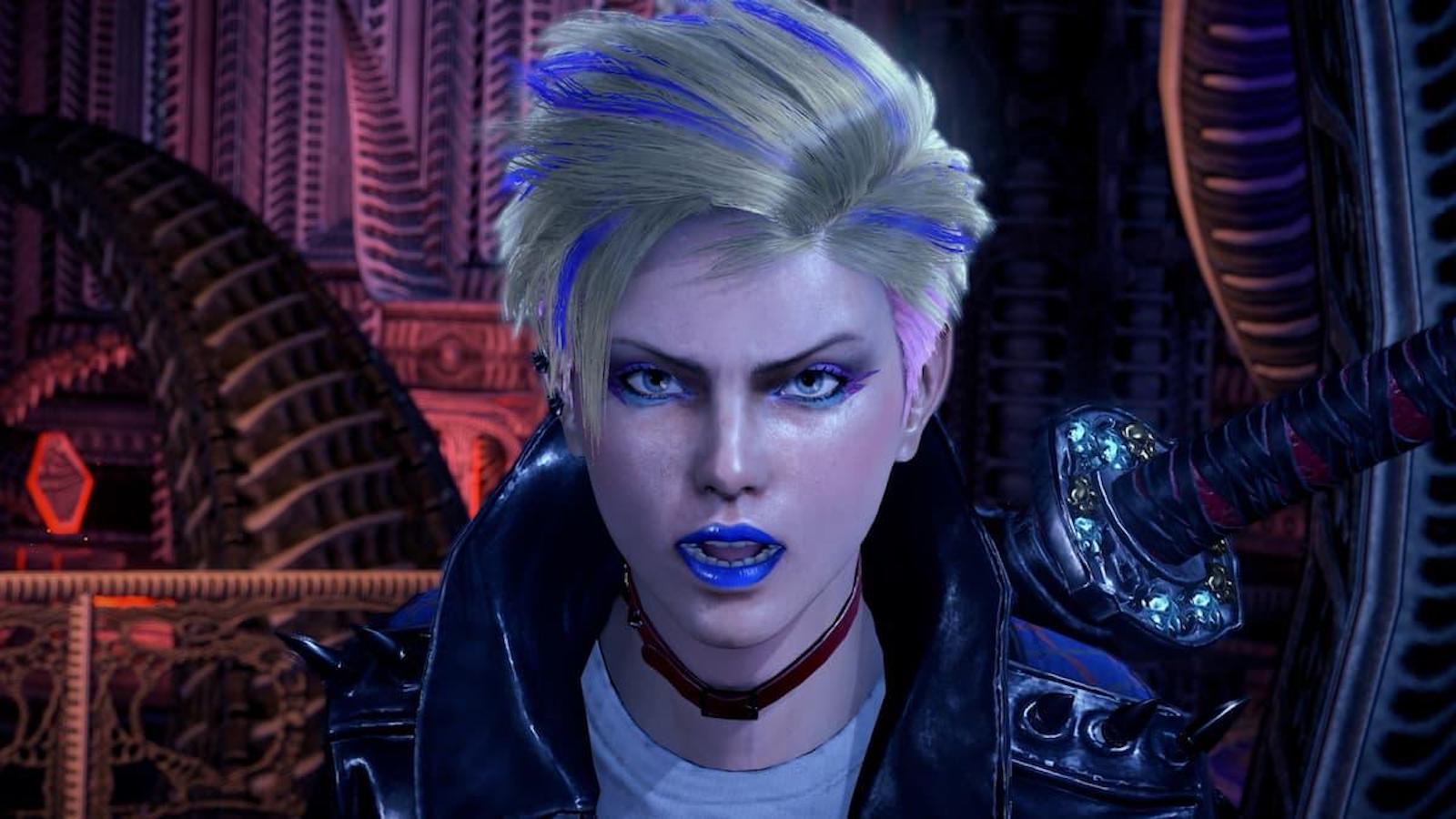

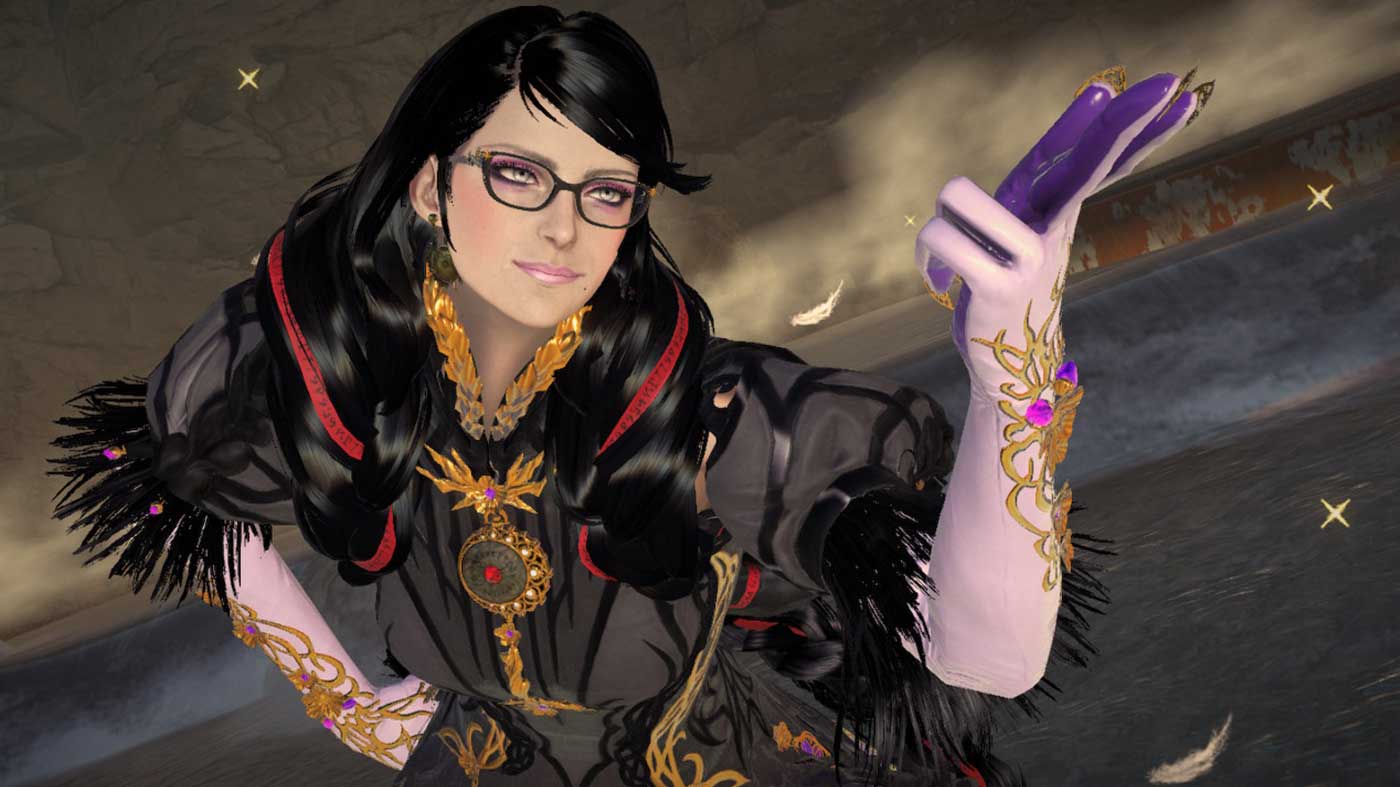


Thanks for taking the time to read our review. If you’d like to support us further, please consider buying us a coffee!






